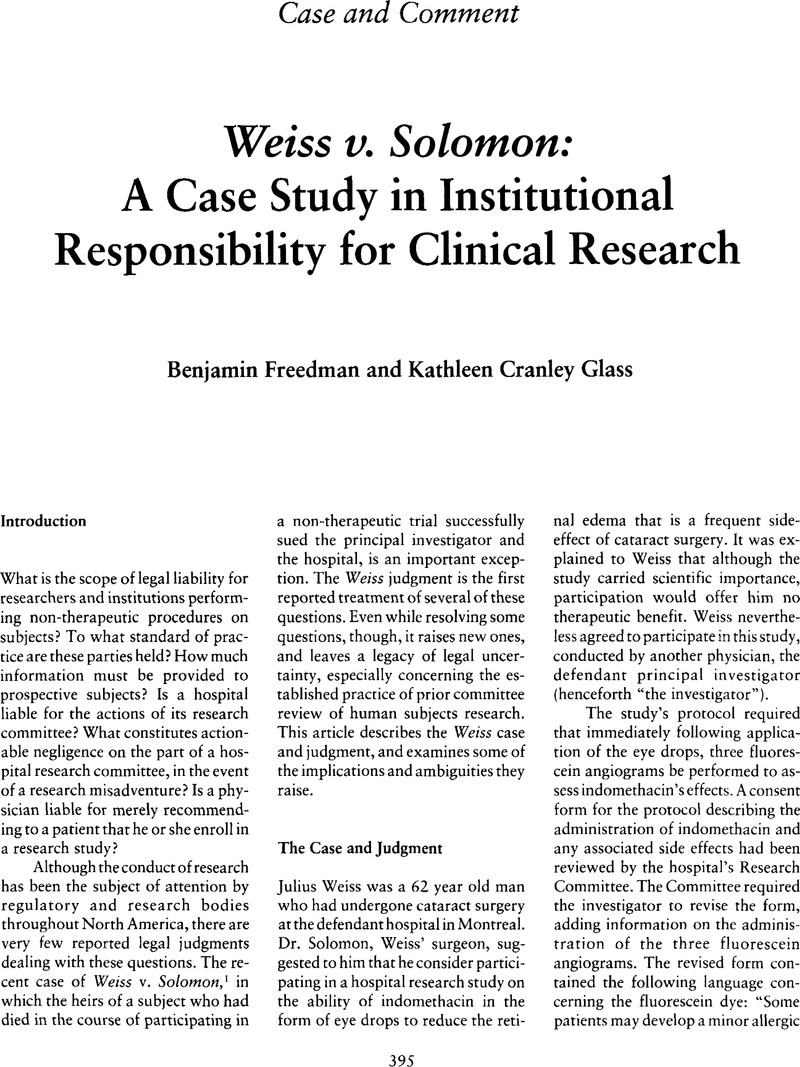Crossref Citations
This article has been cited by the following publications. This list is generated based on data provided by Crossref.
Arboleda-Flórez, Julio
and
Weisstub, David N
1997.
Ethical Research with the Mentally Disordered.
The Canadian Journal of Psychiatry,
Vol. 42,
Issue. 5,
p.
485.
2002.
Textbook of Research Ethics.
p.
171.
Onyemelukwe, Cheluchi
2011.
The Legal Framework for the Governance of Health Research Involving Humans in Nigeria.
Oxford University Commonwealth Law Journal,
Vol. 11,
Issue. 2,
p.
143.
Ramiro Avilés, Miguel A.
2015.
Paving the Road to Negligence: The Compensation for Research-Related Injuries in Spain.
Accountability in Research,
Vol. 22,
Issue. 2,
p.
106.
Nix, Hayden P
Weijer, Charles
Brehaut, Jamie C
Forster, David
Goldstein, Cory E
and
Taljaard, Monica
2021.
Informed consent in cluster randomised trials: a guide for the perplexed.
BMJ Open,
Vol. 11,
Issue. 9,
p.
e054213.



